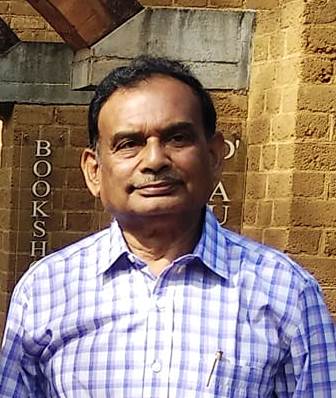The summit has assembled over 30,000 delegates, official entourage, business participants and 3000 journalists covering the programme from across the globe
 Shivaji Sarkar
Shivaji Sarkar

The G20 year-long India presidency bash achieves a lot amid global Ukraine-Russia conflict overshadowing the bid for peace. India’s bilateral with the US, neighbours and Indian Ocean partners Mauritius and neighbour Bangladesh clinch many issues. The G20 has sealed many pacts on digital payments, debt, multilateral development banks, crypto currency, One Future Alliance (OFA), biofuels alliance and a greater push to sustainable development goals (SDGs) since November 2022 at 220 meetings spread across 60 cities in 28 States.
India has included Bangladesh, Egypt, Mauritius, the Netherlands, Nigeria, Oman, Singapore and UAE as the guest countries. It also insists that Africa is given special treatment as well. This is an Indian overreach to give a new dimension to global discussions.
The summit sums it up with bridging divides, breaking barriers, sowing seeds of collaboration in a world where unity prevails over discord, says Prime Minister Narendra Modi as he connects G20 to ASEAN meet being held in Malaysia.
Addressing a press conference on Friday, Economic Affairs Secretary Ajay Seth said India’s G20 Presidency, which focused on supporting “inclusive” and “sustainable” global growth, held several “rich and intense” discussions with members on strengthening MDBs (multilateral development banks.)There is a general consensus on four key financial matters – including the Global South in industrial economies’ growth strategies, restructuring MDBs for inclusive global growth, leveraging digital technology for societal development and exploring potential of new technology for common good.

Follow Us
At the same time, the country has shown a finesse of holding and spreading G20 meets in remote areas and exposing people to the grand G20, an effective extension of G7 and its multinationals. India has steered a global developmental agenda.
The grand operations were allocated Rs 990 crore for the bid to bring a new world economic order. While the budget for direct expenses related to the presidency has been presented, the government has also spent money on preparation of New Delhi for the grand summit.
Over Rs 4,100 crore was spent on Delhi in the lead up to the G20 summit, according to a document posted by Union Minister Meenakshi Lekhi on X. As per the document, the cost was incurred by Delhi and Central government agencies. Closures of core area markets for smoothening security also has cost the local business, trade bodies say.
According to the report, the money was spent on roads, security, footpaths and lighting, among several other things. Several sculptures have also been installed at various places in the national capital as part of the makeover process. Other direct costs related to the event being held in Delhi have not been revealed so far. In many cases the State governments also spent to spruce up the meet venues on their home turf.
Such summits bring in benefits as well open up doors of multinational corporations to increase their footprints as well. The Non-Aligned Movement (NAM) and Commonwealth Heads of Government (CHOGM) meets held in New Delhi also had a cost. The Asiad Games and Commonwealth Games and several other international conferences have given India the expertise to hold mega shows over decades, starting from 1951 Asiad Games.
A key achievement of the G20 summit is to see the emergence of an India-led multilateral and multi-stake holder institution dedicated to taking Indian experience of digital public infrastructure (DPI) global, called the One Future Alliance (OFA). The OFA will be the third major international institution to be pioneered by India under Modi.
It also paves the way for a Global Biofuels Alliance, a multi-system low carbon pathway. The Union Cabinet approved it and it is being considered a major takeaway of the summit. This will open up sharing of best bio-fuel practices.
The others are the International Solar Alliance and the Coalition of Disaster Resilient Infrastructure. The OFA, if successful, will aim at building capacity, provide funding, offer technical assistance and synergise global efforts in the domain of DPI. It will be supported by a new Global DPI Depository, a virtual and voluntary bank of DPI initiatives of G20 members. The headquarters may just be in India. The DPI and the G20 Financial Inclusion Action Plan 2024-26 will play a crucial role in enabling progress towards SDG, a key United Nations objective.
The other area of convergence is around the regulation of crypto currency and its assets. The crypto currency has huge risks as highlighted by the International Monetary Fund (IMF) and Financial Stability Board. The IMF-FSB underlined macroeconomic risks and has now laid down a comprehensive road map on crypto asset regulation.

5 Advantages of KRC 5E for Success MDP course, powered by KRC Foundation.
Employability training
Internship
Earn while you learn ( Work Experience Certificate, subject to selection and performance)
100% Cashback on Fees through Global Garner
KRC Membership & Placement assistance.
Send your resume to get a free profiling session and selection.
Email resume: 5eforsuccess@gmail.com
WP: 9531090090
All of it is an outcome of the 27 meetings, including four ministerial meetings across 12 States and two Union Territories, hosting 3000 delegates. The summit has assembled over 30,000 delegates, official entourage, business participants and 3000 journalists covering the programme from across the globe. Indeed, a mega show.
Another major achievement is to shake up the multilateral development bank (MDB) for the 21st century. This is based on the work of an expert group led by US Treasury Secretary Lawrence Summers and Indian 15th Finance Commission chair NK Singh. The group submitted its first report in July 2023 in Gandhinagar. It will give its second report in Marrakesh in October. The debt management mechanism like that of Sri Lanka, Gambia, and Ghana has also been discussed. However, China is opposed to it.
The G20 has worked out a broad consensus around the issue of climate finance and enhancing the role of MDBs. A related issue pertains to setting up a G20 Technical Assistance Action Plan (TAAP) and the recommendations made to overcome data-related barriers to climate investments in a transitional world. It was originally termed as climate transition. Saudi Arabia objected to it and it was simplified to transition.
Despite Russia’s objection, G20 has agreed to express concern over macroeconomic consequences of food and energy requirements. This hits the low-income countries (LIC) the most.
Consensus has not been easy. Brazil and South Africa helped India forge a text in the last minute negotiations where Russia and China took tough stands. The Indian presidency would be remembered for enshrining G20 with its stamp of a compassionate voice for poor nations, particularly the Global South.
As Foreign Secretary Vinay Kwatra said, “It’s a fact that the industrial economy comes from a vastly different economic base, social base, and the Global South comes from a different economic base. But this is not to say that the priorities, interests and the concerns of the Global South are not relevant in the context of the G20…If anything, they are perhaps, central to the effective functioning and successful outcome”. The years ahead would unfold the benefits the world has because of India. —INFA


